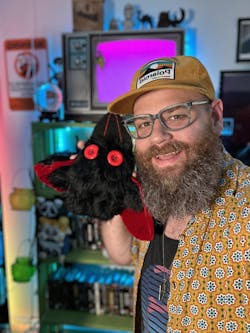Introduction
The image of a mysterious figure, clad in a long cloak with a beak-like mask, is one that has captivated and intrigued many. This figure, known as the plague doctor, is a symbol of a dark period in human history. But what is a plague doctor? Were they real, or just a figment of our collective imagination? In this comprehensive guide, we'll delve deep into the history, significance, and myths surrounding these enigmatic figures and connect with a unique representation of this iconic figure. The bubonic plague, which swept through Europe in the 17th century, brought with it not only death and despair but also the emergence of these peculiar physicians.
What is a Plague Doctor?
The plague doctor was a medical physician who treated those afflicted with the bubonic plague. During outbreaks, they were specifically hired by towns where plague cases were rampant. Their iconic costume, which included a beak-like mask filled with aromatic items, was believed to protect them from the disease. These doctors were often seen as the last hope for many families, and their presence, while eerie, was also a sign of potential recovery and survival. Their role was not just limited to treatment; they were also responsible for recording deaths and ensuring the proper burial of plague victims.
The Origin and Role of the Plague Doctor
The concept of the plague doctor originated in the 17th century during the height of the bubonic plague in Europe. Cities, desperate to combat the deadly disease, would hire these doctors to treat the afflicted and help prevent the spread of the plague. While their primary role was to treat the sick, plague doctors also had other responsibilities. They kept death records, witnessed wills for the dying, and played a crucial role in public health, advising on sanitation and quarantine measures. Their presence was both a blessing and a curse. While they symbolized hope and potential recovery, their appearance often brought fear and dread, as it was a stark reminder of the deadly disease's presence.
The Iconic Costume: More Than Just a Fashion Statement
The Beak-Like Mask
The most recognizable feature of the plague doctor was their mask, resembling a bird's beak. This wasn't just for show. The beak was filled with aromatic herbs and spices, believed to purify the air and protect the doctor from the disease. It was a common belief that the disease was spread through "bad air," and this mask was a preventive measure against it. The design, while practical, also added to the mystique and fear surrounding these doctors.
The Long Cloak and Other Attire
Made of waxed leather, the cloak was designed to be impermeable, preventing any miasma or bad air, then thought to carry the disease, from reaching the doctor. Along with the cloak, they wore gloves, boots, and a wide-brimmed hat, which indicated their profession. This attire, while functional, also served to distance the doctors from the general populace, creating a barrier both physical and psychological.
Myths and Misconceptions
Over the years, many myths have sprung up around the plague doctor. Some believed they were harbingers of death, while others thought they had supernatural powers. In reality, they were simply physicians trying to combat a deadly disease. Their eerie attire and the grim nature of their job led to numerous stories and legends. Some believed that the appearance of a plague doctor in their town signaled the end, while others saw them as saviors. The truth, as always, lies somewhere in between. They were neither angels nor demons, but humans trying to make sense of and combat a seemingly unstoppable force.
The Legacy of the Plague Doctor
Today, the image of the plague doctor is a popular one, especially around Halloween. Their legacy, however, is more profound. They represent humanity's relentless fight against disease and our ability to innovate and adapt in the face of adversity. Their image is not just a reminder of the past but also a symbol of hope, resilience, and human ingenuity.
Plague Doctor in Modern Culture
The plague doctor has found its way into modern culture, from movies to merchandise. One such unique representation is the Plague Doctor Plush from 16% Nation. Inspired by the eerie yet hopeful figure that emerged during the Black Death, this plush captures the essence of history's iconic Plague Doctor. It's a blend of history and comfort, embodying the haunting charm of the Plague Doctor with its beaked mask and dark robe. This plush serves as a reminder of our past struggles and our ability to overcome. It's a perfect gift for history enthusiasts or those who have a penchant for the mysterious and the macabre.

FAQs
Why did plague doctors wear bird masks?
The mask, resembling a bird's beak, was filled with aromatic herbs and spices. It was believed that these herbs would purify the air, protecting the doctor from the disease.
What did plague doctors do?
Plague doctors treated those afflicted with the bubonic plague. They also kept death records, witnessed wills for the dying, and advised on sanitation and quarantine measures.
When were plague doctors around?
The concept of the plague doctor originated in the 17th century during the height of the bubonic plague in Europe.
Did plague doctors kill patients?
No, plague doctors were hired to treat patients. However, their understanding of the disease and medical practices of the time were primitive, so many patients did not survive.
What bird is the plague doctor mask based on?
The mask is not based on a specific bird but rather designed to resemble a bird's beak.
Were plague doctors real?
Yes, plague doctors were real physicians hired by towns during outbreaks of the bubonic plague.
What did plague doctors wear?
They wore a beak-like mask filled with aromatic herbs, a long waxed leather cloak, gloves, boots, and a wide-brimmed hat.
Were plague doctors good or bad?
Plague doctors were neither good nor bad. They were physicians trying to treat a deadly disease with the knowledge and tools they had at the time.
Why did doctors wear plague masks?
The beak-like mask was believed to protect the doctor from the disease by purifying the air with the aromatic herbs it contained.
Why did the plague doctor wear a beak?
The beak was filled with aromatic herbs and spices, believed to purify the air and protect the doctor from the disease.
Conclusion
The plague doctor, a symbol of a bygone era, serves as a reminder of our past struggles and our ability to overcome. Their iconic image, the myths surrounding them, and their representation in modern culture, like the Plague Doctor Plush, all tell a story of humanity's fight against disease and adversity. As we embrace the mystique of the past, we also look forward to a future of innovation, resilience, and hope.
 Sold out
Sold out Sold out
Sold out




























